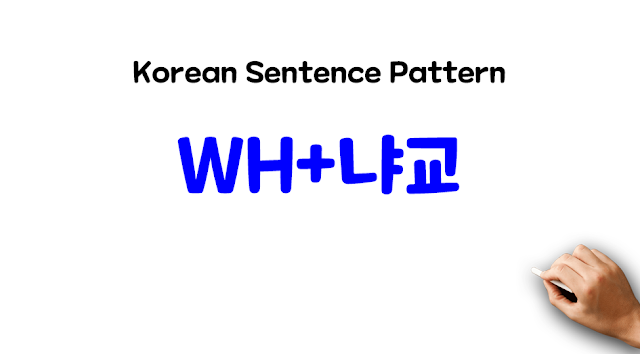Let's take a look at the Korean sentence
pattern WH + 냐교. We use this to repeat a question that has
been asked because the listener failed to hear it or didn't respond. The
question must be a wh-question with 이다 as the main verb.
Examples are 이름이 뭐예요? (What is your name?), 비누 얼마예요? (How much is the soap?), and 누구예요? (Who are you?) These questions are in polite speech. The 예요 at the end is 이다.
For example, I am at the police station about to interrogate an assaulter. I
ask him What is your name? (이름이 뭐예요?), but he
refuses to answer. So I ask again What is your name? (I am
asking you what your name is). This time, 이다 (예요) is removed and replaced with 냐고(요). The actual sentence is 이름이 뭐냐고요? Use this whenever you repeat a question for
the second time.
비누 얼마냐고요?
I am asking how much the soap is.
누구냐고요?
I am asking who you are.
생일이 언제냐고?
I am asking when your
birthday is.

